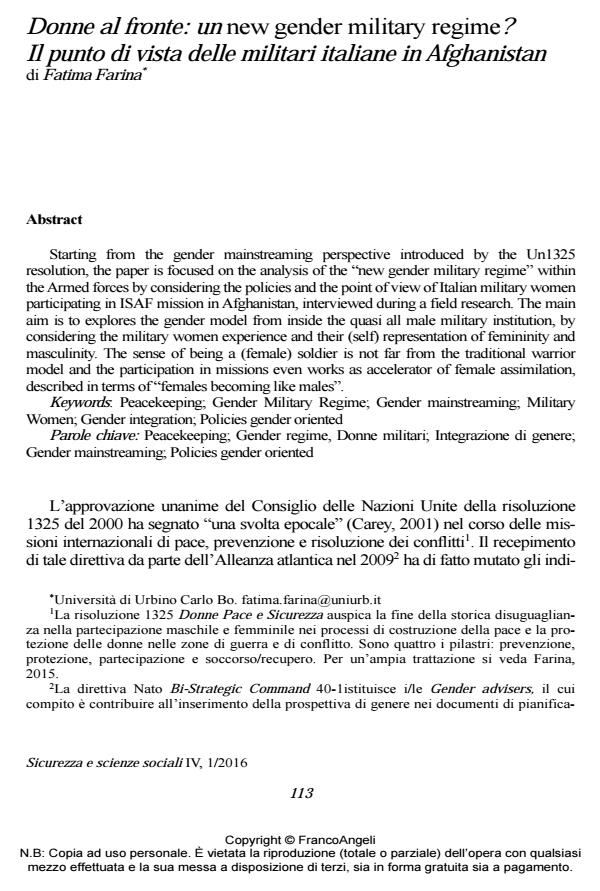Donne al fronte: un new gender military regime? Il punto di vista delle militari italiane in Afghanistan
Titolo Rivista SICUREZZA E SCIENZE SOCIALI
Autori/Curatori Fatima Farina
Anno di pubblicazione 2016 Fascicolo 2016/1
Lingua Italiano Numero pagine 15 P. 113-127 Dimensione file 202 KB
DOI 10.3280/SISS2016-001008
Il DOI è il codice a barre della proprietà intellettuale: per saperne di più
clicca qui
Qui sotto puoi vedere in anteprima la prima pagina di questo articolo.
Se questo articolo ti interessa, lo puoi acquistare (e scaricare in formato pdf) seguendo le facili indicazioni per acquistare il download credit. Acquista Download Credits per scaricare questo Articolo in formato PDF

FrancoAngeli è membro della Publishers International Linking Association, Inc (PILA)associazione indipendente e non profit per facilitare (attraverso i servizi tecnologici implementati da CrossRef.org) l’accesso degli studiosi ai contenuti digitali nelle pubblicazioni professionali e scientifiche
Starting from the gender mainstreaming perspective introduced by the Un1325 resolution, the paper is focused on the analysis of the "new gender military regime" within the Armed forces by considering the policies and the point of view of Italian military women participating in ISAF mission in Afghanistan, interviewed during a field research. The main aim is to explores the gender model from inside the quasi all male military institution, by considering the military women experience and their (self) representation of femininity and masculinity. The sense of being a (female) soldier is not far from the traditional warrior model and the participation in missions even works as accelerator of female assimilation, described in terms of "females becoming like males".
Parole chiave:Peacekeeping; Gender regime, Donne militari; Integrazione di genere; Gender mainstreaming; Policies gender oriented
Fatima Farina, Donne al fronte: un new gender military regime? Il punto di vista delle militari italiane in Afghanistan in "SICUREZZA E SCIENZE SOCIALI" 1/2016, pp 113-127, DOI: 10.3280/SISS2016-001008